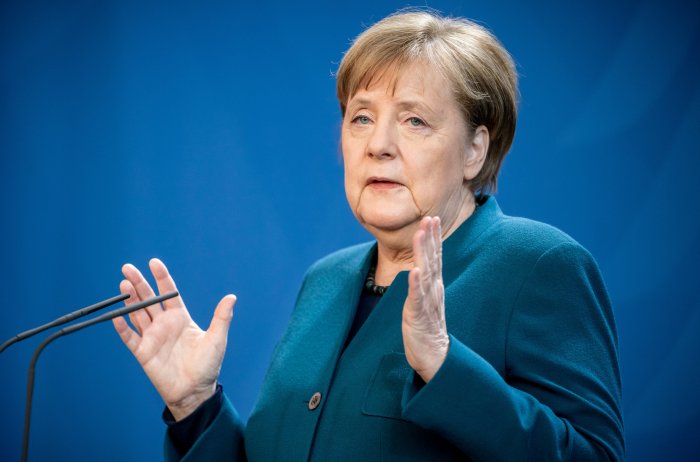DUBAI/LONDON/MOSCOW/NEW YORK (Reuters) – OPEC and its allies are working on a deal for an unprecedented oil production cut equivalent to around 10% of worldwide supply in what they expect will be a global effort including the United States, but the White House did not make such a commitment after a Friday meeting with oil companies.
While U.S. President Donald Trump pledged help for the industry at the meeting, he made no commitment to take the extraordinary step of persuading U.S. companies to cut output.
In a subsequent phone conference, U.S. Energy Secretary Dan Brouillette told industry executives that the White House is not negotiating with Saudi Arabia or Russia, but it is encouraging them to come together to reach an agreement to cut production, a source who listened to the call said.
The oil market has crashed, with prices falling to $34 a barrel from $65 at the beginning of the year, as a result of the coronavirus pandemic. Fuel demand has dropped by roughly a third, or 30 million barrels per day, as billions of people worldwide restrict their movements.
A global deal to reduce production by as much as 10 million to 15 million barrels per day would require participation from nations that do not exert state control over output, including the United States, now the world’s largest producer of crude.
Trump said on Thursday he did not make any concessions to Saudi Arabia and Russia, such as agreeing to a U.S. domestic production cut, a move forbidden by U.S. antitrust laws. Some U.S. officials have suggested U.S. production was set for a steep decline anyway because of low prices.
A meeting of OPEC and allies such as Russia has been scheduled for April 6, but details were thin on the exact distribution of production cuts. No time has yet been set for the meeting, OPEC sources said.
OPEC producers were waiting to see if the United States commits to any efforts to stabilize the markets, two OPEC sources said. They said a deal must include producers from outside OPEC+, an alliance which includes OPEC members, Russia and other producers, but excludes oil nations such as the United States, Canada, Norway and Brazil.
“The U.S. needs to contribute from shale oil,” an OPEC source said. Russia has long expressed frustration that its joint cuts with OPEC were only lending support to higher-cost U.S. shale producers.
RUSSIA
Russian President Vladimir Putin said on Friday that his country was ready to cut production along with OPEC and the United States, while still blaming Saudi Arabia for the market’s collapse. Saudi Arabia’s Energy Minister Abdulaziz bin Salman responded, telling state media that it was not Saudi Arabia that refused to extend a production-cut deal that would have reined in output in early March.
Russian Energy Minister Alexander Novak told Russian state media that he understands the United States has legal restrictions on output cuts, but it should still be flexible.
Brouillette, in his call with the industry, did not mention the possibility of U.S. industry production cuts, the source who listened to the call said.
Jason Kenney, the premier of Alberta, Canada’s primary oil-producing province, said on Friday that the province would join the Monday OPEC call.
The Norwegian oil and energy ministry declined to comment on Friday on whether Western Europe’s largest producer could cut output to support prices.
The International Energy Agency warned on Friday that a cut of 10 million barrels per day would not be enough to counter the huge fall in oil demand. Even with such a cut, inventories would increase by 15 million barrels per day in the second quarter, said Fatih Birol, the head of the agency.
OIL PRICES RECOVER, FOR NOW
Oil prices recovered from the lows of $20 per barrel this week with Brent settling at $34.11 per barrel on Friday, but far below the $66 closing level at the end of 2019.
Prices plunged in early March after Russia and Saudi Arabia could not come to an agreement to curb output. The Saudis shocked the oil industry with an aggressive series of steps to take back market share that included cutting export prices, pumping at maximum production and trying to sell cheaper oil to refiners that buy Russian crude.
The oil market was dealt a heavy blow by the freefall in demand due to the coronavirus pandemic, which sent crude prices to their lowest levels since 2002.
The oil-price crash spurred regulators in the U.S. state of Texas, the heart of the country’s oil production, to consider regulating output for the first time in nearly 50 years.
Major global producers have already scaled back production, as fuel demand has dropped precipitously and storage is rapidly filling. This past week, U.S. drillers idled more rigs in one week than at any time in the last five years.
(Reporting by Rania El Gamal, Alex Lawler, Olesya Astakhova, Ahmad Ghaddar and Laila Kearney; writing by David Gaffen and Dmitry Zhdannikov; editing by Elaine Hardcastle, Leslie Adler and Sonya Hepinstall)























